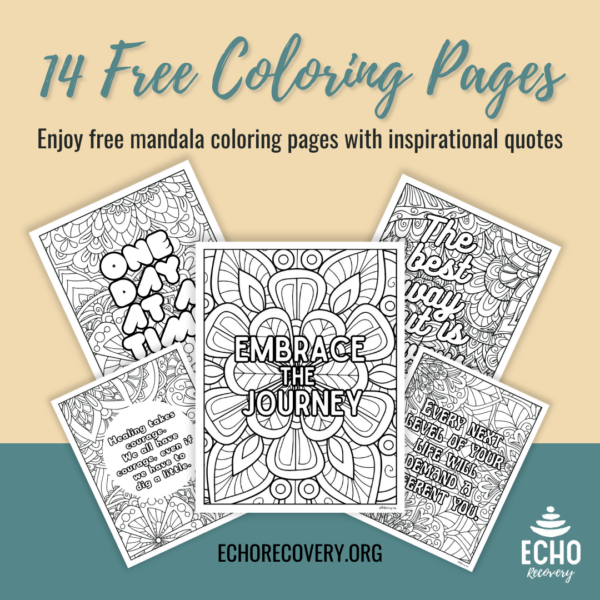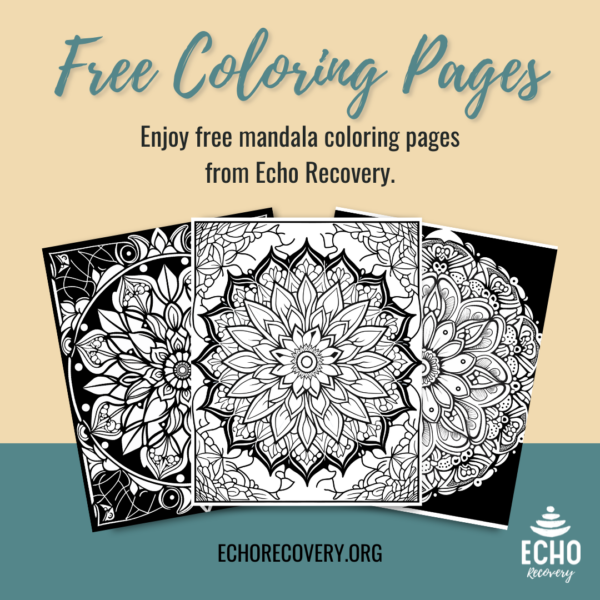For many people facing stress, mental health concerns, and even just everyday life, the world can feel perpetually dark. Like a never-ending tunnel, the mind may try to convince you that you are riding a runaway train that fails to find the light at the end. That trapped mind might tell you that the easiest solution is to accept this as your new normal, but deep down, you know that life was never supposed to be this way. Without steps to combat the darkness, many of those stuck in that cycle float through life, never feeling like who they were meant to be.
For those in recovery from substance use disorders without adequate coping skills, this darkness can result in continued use or risk a relapse back into substance use behaviors. Fortunately, life does not have to be lived in overwhelming shadows. With the right support, learning to navigate the difficult emotions, triggers, and stressors that accompany recovery can help create the color and light we need to help pull us from our darkness.
Why Coloring?
At an early age, crayons became tools of expression as we color both inside and outside the lines. From the walls in our homes to the paper at school, wherever we could create color, we tried. For many of us, however, as we age, we forget how powerful those bright and luminant creations were. We often stop creating and put pressure on ourselves to try to fit in, exacerbating troubles and traumas of the past that may have been left untreated.
Helping individuals recover starts by helping them understand that coloring outside the lines is nothing more than an expression of self. It is okay to be different, and recognizing that everyone’s life journey is different starts with the ability to show on the outside what is going on inside. For many in recovery, this starts by revisiting that favorite childhood activity: coloring.
By utilizing coloring pages as a form of art therapy, an individual recovering from substance use disorder can find the colors they were longing for in that darkness. In fact, coloring pages provide a multitude of benefits that go beyond simply practicing art skills.
Coloring Benefits
There are numerous benefits to coloring that can help provide the therapy needed to support recovery from substance use.
These include:
Meditation
When you’re coloring, the mind can become more focused. Many people with substance use disorders suffer from other underlying conditions such as ADHD, anxiety, depression, panic disorders, or even post-traumatic stress disorders. For many with these types of disorders, the mind is searching to be anywhere but in the current moment. The meditative properties of coloring and focusing on its soothing qualities can actually calm the mind and allow it to exist in the moment at hand.
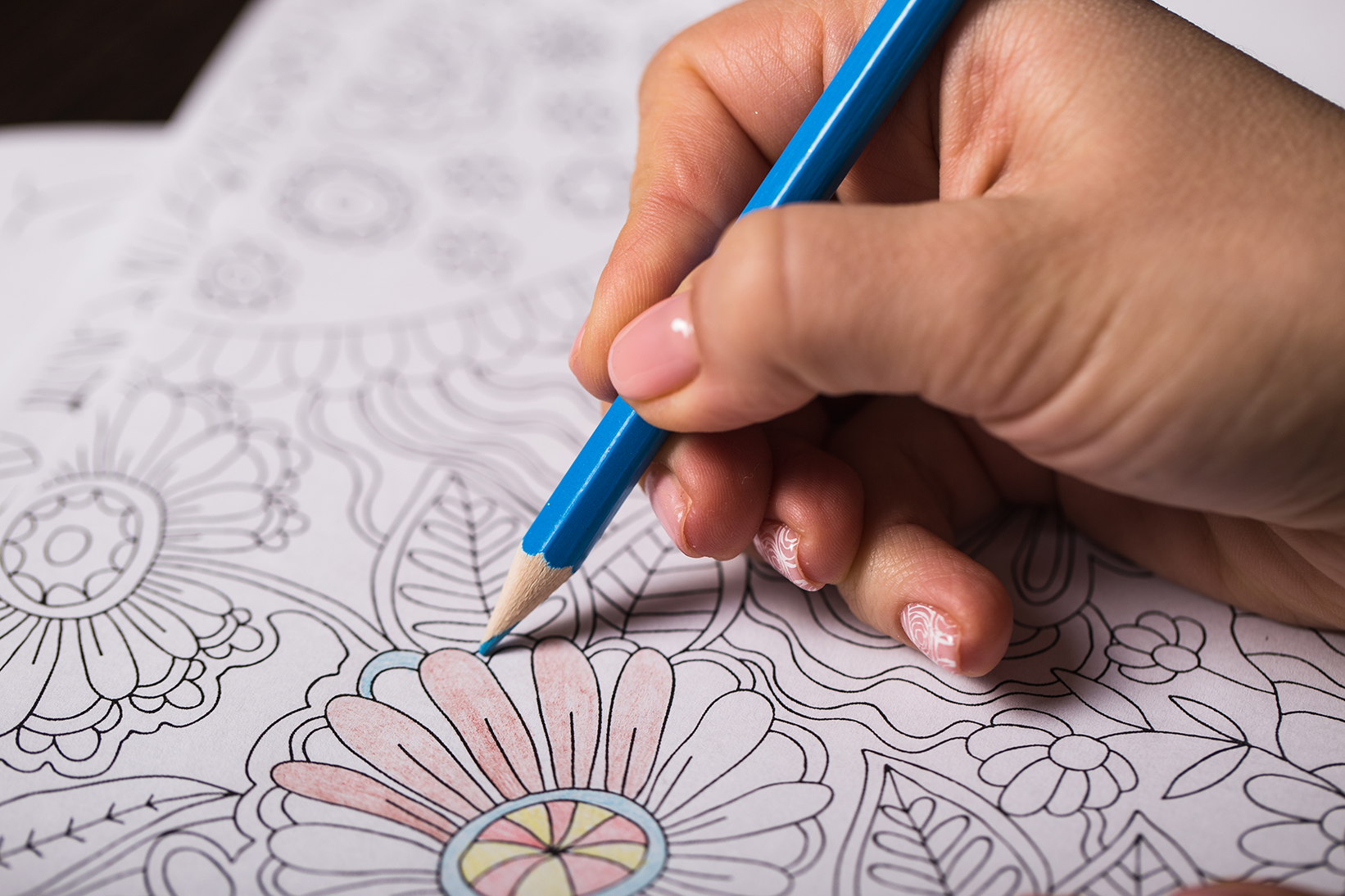
Creating Mindfulness
Meditation is a great way to calm the mind in a moment, but mindfulness adds another layer that allows the mind to process thoughts and feelings. Without the ability to create the necessary space for purposeful reflection, the mind can become stuck in a loop that focuses on the negativities and difficulties of the past. This can cause a person to search for ways of breaking the cycle in unhealthy ways, which can make the turn to substances easy. Coloring creates the openness the mind needs to process emotions in the moment rather than continuing to perpetuate them with unsettled thoughts.
Expressing Oneself Freely
Recovery can be a lonely process for many. Distancing yourself from others can create feelings of isolation and limit the way you express yourself. Through intentional thoughts and choices in color patterns, the feelings one experiences internally can be expressed in new and unique ways. They can be kept to yourself or viewed by others who may be able to more easily understand the complicated journey you are on.
Enjoyment
Recovery is a difficult process that is filled with many obstacles and challenges, and it can often feel like a punishment for engaging in an activity you once enjoyed. In addition, you may have given up many things you liked doing during active addiction. That’s why there is such power of entertainment, joy, and playfulness within the recovery process. When you color, childhood memories rediscover their place in the forefront of the mind, where it isn’t just about coloring inside the lines but the joy of creation and expression. This can help to reduce the feelings of stress and anxiety commonly associated with recovery.
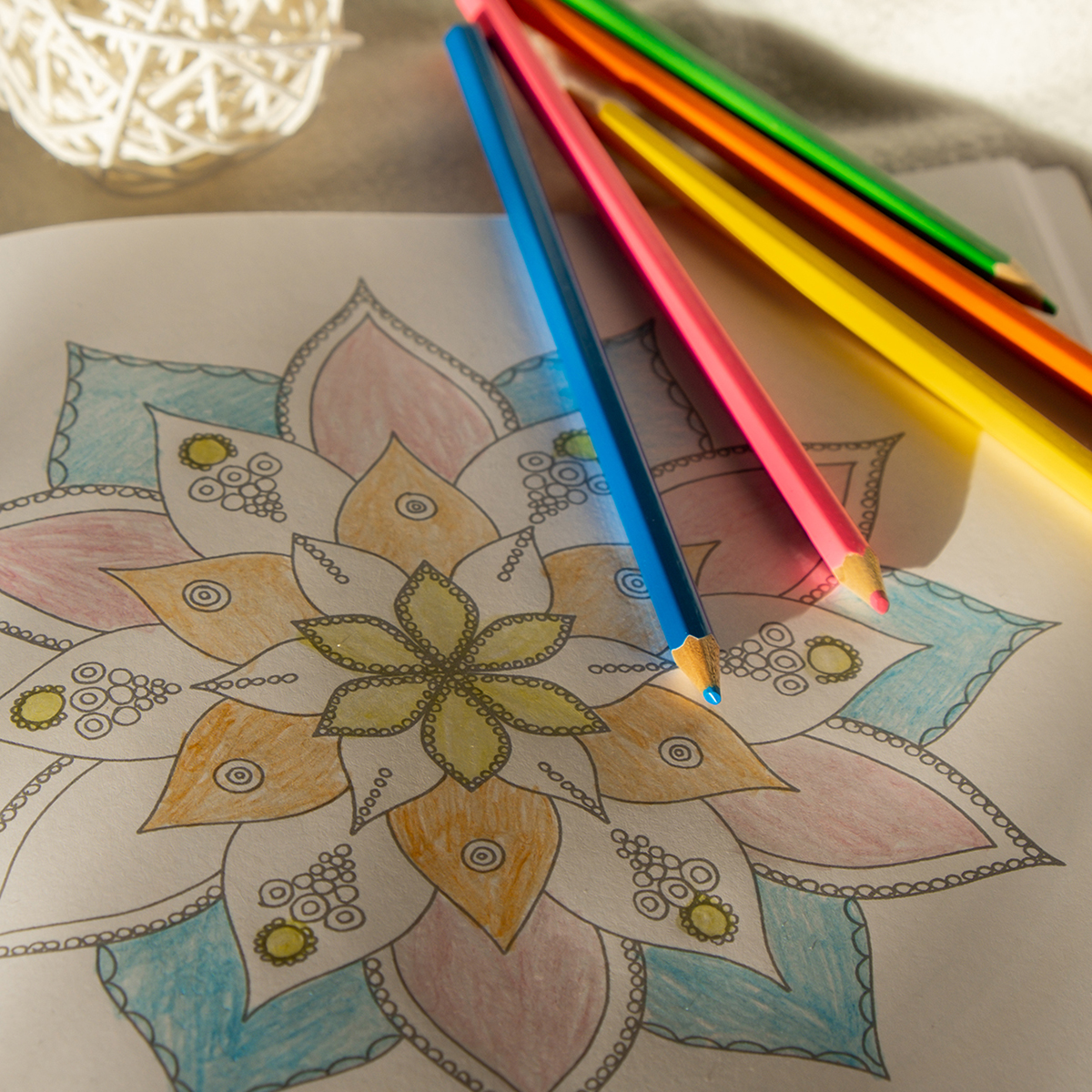
Improved Concentration
With substance use disorders often comes panic and anxiety. These can cause the mind to race and lose focus on the task at hand. Coloring is a low-stress opportunity to regain the focus and concentration needed for other tasks.
Better Sleep
For many people with substance use disorders, including those in recovery, sleep is difficult. Whether it is the result of the aforementioned racing mind, the stress of the potential for relapse, or simply as a side effect of the substance or its withdrawals, sleep can be limited in both quality and quantity. Fortunately, coloring can help calm the mind, which promotes sleep. Much like those who enjoy reading before bed as a way to encourage the brain to rest, those who enjoy coloring may find that it creates an atmosphere conducive to sleep.
Get Started With Coloring Pages
Whether you are taking the recommendation of your mental health and recovery professionals or you want to explore other opportunities to aid in your personal growth throughout recovery, discovering the power of color and creation may be the light to bring you from the darkness. Here are a few ways specific types of coloring pages can help you during the recovery process. Read up so that you can find the one that may be right for you. We even have a few free samples to help start your art therapy journey.
Recovery Themed Coloring Pages
In recent years, we’ve found a number of coloring books tailored to those in recovery. Often filled with positive messages and words of affirmation, the design and style of each page allow artists the opportunity to express themselves while absorbing important messages for the recovery journey. For example, on days when recovery is more difficult, you may choose to incorporate shades of grays and blacks.
On days when finding the light is more necessary, you may turn to the powers of yellows and oranges. No matter what color choices are made, these types of coloring pages allow a dual focus on art therapy and positive thinking. They help you focus your mind on creativity and creation while also taking in the words and making connections with the images. With the help of recovery coloring pages, you may be able to center your thoughts on your recovery journey.
Sobriety & Recovery Coloring Pages
Like recovery coloring pages, sober coloring pages provide a creative outlet for managing the difficulties associated with substance use. Found in a variety of options from serious to bold to humorous, sober coloring pages can build upon the unique perspectives associated with recovering from substance use disorders. With each color choice or design element, there are opportunities to express what is on your mind, and if you discuss your art with others, you can draw on the support of those around you.
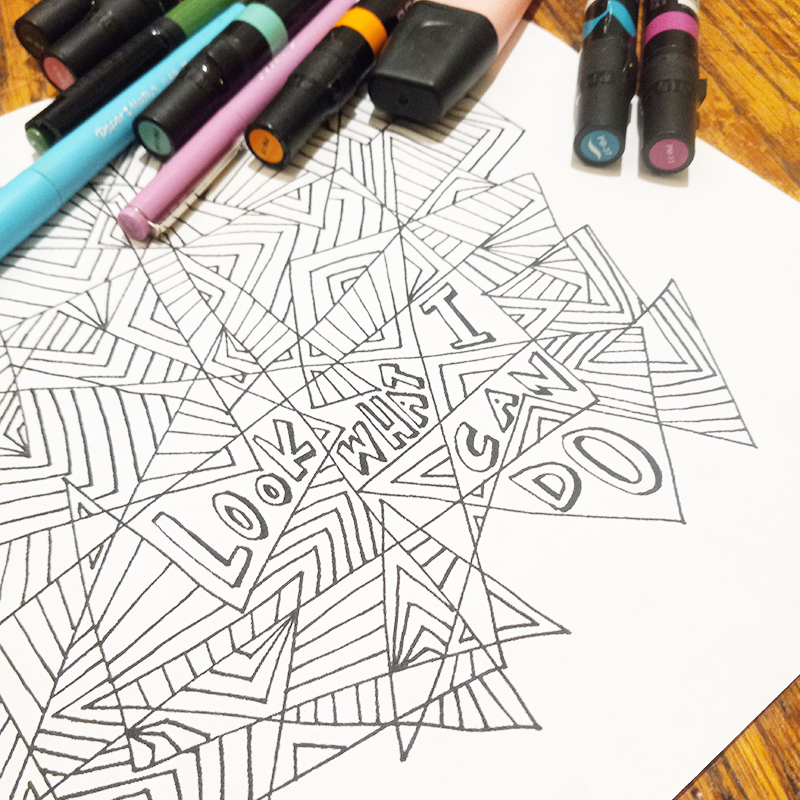
Mandala Coloring Pages
Mandalas are derived from Buddhism and are designed using a pattern of geometric shapes, often incorporating a circle as a part of the design or in its overall shape. Many people may be familiar with these artistic designs because Buddhist monks famously create them as a way to meditate and bring calm and peace. Often, these elaborate designs are scratched into the sand. However, just like most ideas throughout the world, it has now become a widespread form of art used in various cultures.
A notable psychological study has found that mandalas can help reduce anxiety levels. In the study, free-form coloring was compared to mandala coloring over a 20-minute period. It concluded that those who colored mandalas were able to reduce anxiety levels more easily within that time.
Mandalas were the subject of psychological study in the first place due to the amount of anecdotal evidence to that effect. In fact, Carl Jung knew the benefits of mandalas early on and concluded that they are useful in reducing stress and anxiety because the process was rooted in the subconscious. He also believed that coloring allowed individuals to reconnect with basic cognitive abilities. The research shows that coloring mandalas certainly can be a valuable tool in processing the trauma and other forms of distress that are often experienced by those with substance use disorders.
Creating the Colors of Your Life
Substance use disorder can seem like it’s eliminated the best things from your life, including hobbies, connections, and joys. The ability to navigate emotions, traumas, and even interpersonal relationships can become nonexistent as substance use begins to take all the energy you once had for these important aspects of life. Often, putting off facing these challenges for months or years, living in the darkness can feel like it is the only option. Together, the removal of joy and the persistence of the negative impacts of substance use can cause your world to become a gray, shadowed blur. Recreating the colors of your life by using coloring pages can illuminate new ways of thinking, improve focus, reduce stress, and even help create the space you need to truly see your authentic self inside.
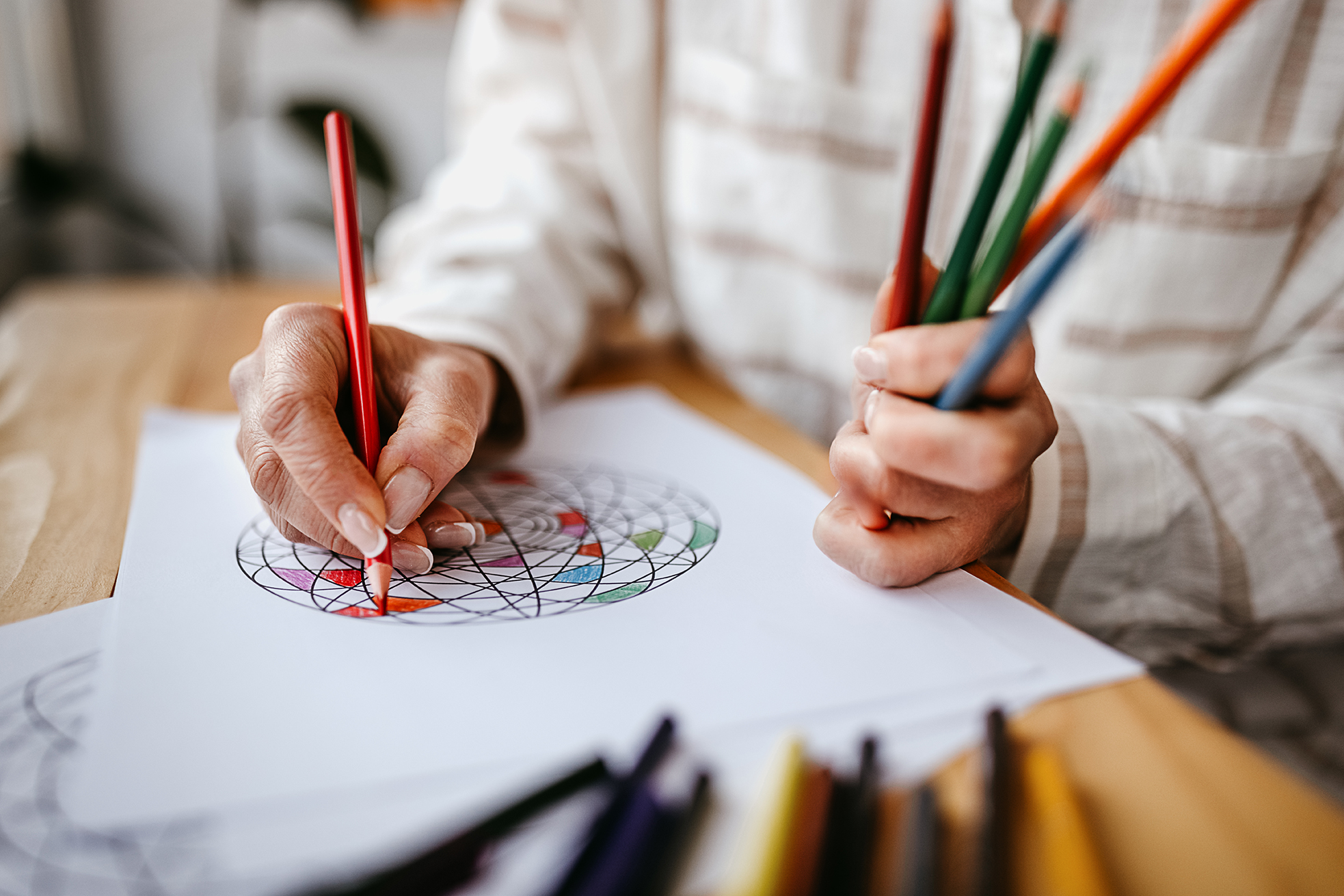
Trauma, substance use disorders, and other mental health struggles do not define a person. They are simply difficulties we must address. Art therapies like coloring can allow the expression necessary to create the mind’s freedom. It isn’t about coloring inside or outside the lines, choosing the right colors, or creating a museum piece; it is about the process, the peace it provides, and the ability to speak in colors and express yourself through a universal language.
Whether you choose to start with one of our free coloring pages or decide to explore one of the many coloring books available online, your substance use disorder recovery can benefit from tools as simple as a box of crayons, a pack of colored pencils, or a box of markers. The same tools you used when you discovered how colors can express who you are or when you first started coloring outside the lines can now help you bring back your light and create the colors of your world.
For more information about recovery and resources to help you maintain your recovery journey, ECHO Recovery is here to help. Our recovery community is dedicated to creating awareness and sharing resources to help end the negative influence of harmful substances in so many lives.
Resources:
- Bobby, J. (2022, August 15). Mental health benefits of coloring. Mayo Clinic Health System. https://www.mayoclinichealthsystem.org/hometown-health/speaking-of-health/coloring-is-good-for-your-health#:~:text=Coloring%20is%20a%20healthy%20way
- Curry, N. A., & Kasser, T. (2005). Can Coloring Mandalas Reduce Anxiety? Art Therapy, 22(2), 81–85. https://doi.org/10.1080/07421656.2005.10129441
- Coloring is not just for kids! (n.d.). CHE Behavioral Health Services. Retrieved May 10, 2024, from https://www.cheservices.com/blog/coloring-is-not-just-for-kids#:~:text=He%20stated%2C%20%E2%80%9CColour%20is%20the
- Cleveland Clinic. (2022, October 20). Substance Use Disorder (SUD): Symptoms & Treatment. Cleveland Clinic. https://my.clevelandclinic.org/health/diseases/16652-drug-addiction-substance-use-disorder-sud
- Blume, N. (n.d.). Exploring the Mandala. Asia Society. https://asiasociety.org/exploring-mandala#:~:text=Mandalas%20are%20Buddhist%20devotional%20images
- American Art Therapy Association. (2022). About Art Therapy. American Art Therapy Association. https://arttherapy.org/about-art-therapy/
Jenny Weatherall is the co-owner and CEO of Eminent SEO, a design and marketing agency founded in 2009. She has worked in the industry since 2005, when she fell in love with digital marketing… and her now husband and partner, Chris. Together they have 6 children and 3 granddaughters.
Jenny has a passion for learning and sharing what she learns. She has researched, written and published hundreds of articles on a wide variety of topics, including: SEO, design, marketing, ethics, business management, sustainability, inclusion, behavioral health, wellness and work-life balance.

